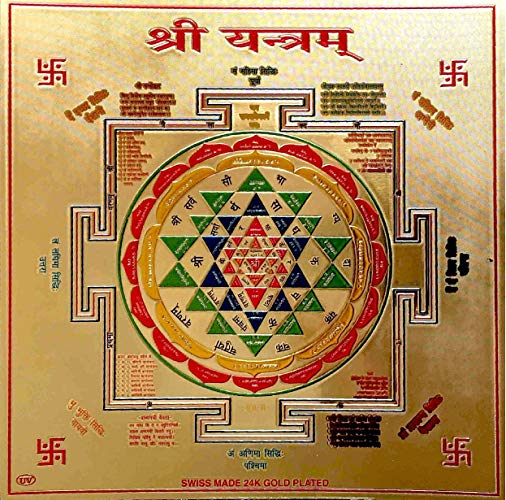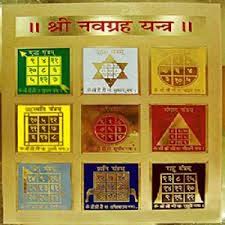|
Yantra – the Energy Diagrams The Yantras are geometric diagrams or energy diagrams representing various energy fields, mainly from tantric traditions. Yantra literally means machine or instrument. In Hinduism, since ancient times Yantras are used during worship to correct the economic situation, to defeat enemies and to please god & goddesses. Specific Yantras are associated with specific deities. Most popular Yantras are Sri Yantra, Lakshmi Yantra, Sukh Samridhi Yantra, Vyapaar Vriddhi Yantra, Vastu Yantra, Kubar Yantra, Hanuman Yantra, etc. Yantras are the physical form of the mantras having various shapes and using lines, dots and shapes such as triangle, circle, hexagon, octagon and the symbolic petals of the lotus spreading from the center. These are symbolic representations of this process of evolution and involution. When these concentric figures are gradually growing away from its center (bindu) in stages, this is for human beings a symbol of the process of macrocosmic evolution. When they are gradually growing towards its center, this is for human beings a symbol of the process of microcosmic involution. In Hindu ritual practices, which date back to the Vedic times, Yantras are created using certain objects, symbols, sounds, names and forms, and specific divisions of time to invoke the power of a deity. Constituents of Yantra Generally, yantras have following constituents:
Types of Yantras
Sri Yantra Sri Yantra, also known as Sri Chakra, is called the mother of all yantras because all other yantras derive from it. Sri refers to bhagwati “Lalita tripursundari”. Lalita means one who plays; Tripura means three world as well as three Shakti (Kali, Lakshmi & Sarasvati) and Sundari means beauty. Sri Yantra represents the microcosmic level of the Universe as well as the human body. When Sri Yantra is properly installed, it is highly beneficial and bestows pleasure, prosperity and success. Sri Yantra is a sacred mathematically precise design and based upon Golden Proportion or Phi ratio. It is represented in three forms viz. plane form (most common), pyramidal form (Meru) and spherical form (Kurma or turtle) which is rarest. The Sri Yantra has point in the center and a configuration of nine interlocking triangles, surrounded by two circles of lotus petals with the whole encased within a gated frame, called the "earth citadel". The design of Sri Yantra consists of the following:
Out of nine triangles, the five downward pointing triangles represent Shakti (creation), the feminine creative power; five prana i.e. prana, apana, udana, samana & vyana; five janandariyas i.e. Eyes, Ears, Nose, Tongue & Skin; five karmandariyas i.e. powers of speech, handling, movement, excretion and procreation or reproduction; five tanmantras i.e. (Shape (रूप), Sound (शब्द), Smell (गंध), Taste (रस), Touch (स्पर्श) and five elements i.e. Earth (पृथ्वी), Water (जल), Fire (अग्नि), Air (वायु), Ether (आकाश). The four upright triangles, represent Shiva (dissolution); the masculine aspect of divinity. The four signify mind, intellect, chit (memory) and ego.
Sri Yantra helps spiritual person to move from material world to final enlightenment i.e. from the outer rectangles to the bindu (dot) in Centre. Sri Yantra has nine levels where various deities reside. These levels symbolize as follow:
The above two circles indicate fulfillment of desires.
Sri Yantra is widely available but unless the construction and pran pratishtha are done in defined manner, it is not fruitful. Precision, Concentricity, Equilaterally and golden ratio are the basis to evaluate construction of Sri Yantra. Sri Yantra constructed in gold is most effective; in silver lesser effective and copper even much lesser effective. Worship of Sri Yantra should be done on auspicious days such as on Aakshya Tritya, Navratri, Diwali, Dhan-Tryodashi, etc. Worship of Sri Yantra is done depending on regional norms. This is followed by Sri Vidya Upasana. Sri vidya upasana is Panchadashi i.e. fifteen letters mantra. The main purpose of Sri Vidya is to rouse kundalini. Most powerful mantra is Shodashakshari mantra is king of mantras which is equivalent to 64 mantras. However, Sri Yantra can be worshipped by other devi mantras. Reference:
0 Comments
Leave a Reply. |
Archives
July 2024
Categories |


 RSS Feed
RSS Feed